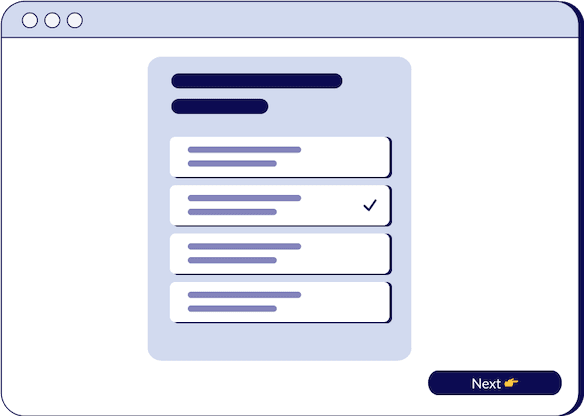
Discovery Consensus
Matt Doyon
Chief Executive Officer @ Triple Session

- duration
- 15 min
- Average Score
- 80%
- Stars
- 5
In the world of sales, building consensus within a buying committee is crucial for closing deals and driving business growth. The process of gaining agreement from multiple stakeholders involves understanding their roles, mapping out compelling events, and effectively driving the conversation forward. In this blog post, we will delve into the importance of consensus building and explore strategies to navigate a buying committee successfully.
The Complex Buying Committee Landscape
Today, purchasing decisions have become increasingly complex, especially in B2B contexts. According to the book "Challenger Customer," the average sale involves 5.4 people within the buying committee. This means that the more people involved, the higher the chances of losing the deal. With increased scrutiny over purchasing decisions, it is crucial to identify and engage all relevant stakeholders to secure consensus.
Let's take a closer look at the key players typically found in a buying committee:
1. Users: These individuals are front-line personnel who interact directly with the product or service. While they may not make the final decision individually, their buy-in is instrumental in winning the deal. Ignoring their perspectives can hinder success.
2. Managers: In complex deals, managers play a significant role in the decision-making process. They are responsible for making recommendations regarding what to purchase and what to avoid. Their approval is crucial for moving forward, and their focus lies in ensuring the systems in place meet the needs of the users.
3. Tech Buyers: When selling technical or enterprise solutions, it is common to have tech buyers involved. They evaluate the technical aspects of potential purchases, screening for compliance with specific criteria. While they might not vote in favor of a particular solution, they can disqualify ones that fail to meet their standards.
4. Economic Buyers: These individuals hold the purse strings. They sign the contracts and make the final go/no-go decisions. Economic buyers usually have a vested interest in the budget and financial implications. Understanding their perspective is vital for positioning your solution effectively.
5. Purchasing Personnel: In larger deals or organizations, a purchasing representative may be involved to negotiate terms and secure the best possible deal on behalf of the company. Their focus is primarily on price and terms, and they wield influence during the final stages of the decision-making process.
It is important to note that the traditional notion of a single "decision maker" is often misleading. In reality, every stakeholder in the buying committee makes their own decision. Therefore, empowering each person to make informed choices aligned with their role is key.
The Pitfalls of Individual Yeses
When building consensus, it is critical to avoid the common misconception that collecting individual yeses from each stakeholder will lead to success. Research from the Challenger customer data suggests that this approach actually diminishes the likelihood of closing a deal. Engaging in one-on-one meetings and addressing individual needs fractures the team and creates confusion.
Strategies for Building Consensus
Rather than seeking individual buy-in, the key to successful consensus-building lies in collectively driving group agreement toward a single recommended solution. This approach requires understanding the implications of the current state, as well as the impact on each stakeholder.
To effectively manage consensus-building conversations, the champion within the buying committee—typically a user—plays a vital role. Their responsibility is to champion your solution internally and obtain buy-in from other stakeholders. Whether the process starts with the economic buyer or the user, it is crucial to maintain a consistent narrative throughout the conversation, centered around the implications for the business.
When building consensus with various stakeholders, you should use language that refers to previous conversations, such as "You mentioned earlier" or "He/she indicated that." By referencing these past discussions, you reinforce the collective decision-making process. However, it is important to remember that you, as a salesperson, cannot testify on behalf of your witnesses (i.e., stakeholders). Your role is to extract their perspectives, gather their testimony, and weave it into a collective business case.
The Art of Navigating a Buying Committee
Successfully navigating a buying committee requires a deep understanding of each stakeholder's role and perspective. Early-stage discovery is essential in gathering the necessary insights—such as pain points, impacts, and messaging preferences—for creating a tailored approach for each persona within the buying committee.
While building consensus, employ the strategy of "multithreading" to effectively engage all relevant stakeholders. This involves establishing a point of contact (champion) and leveraging their influence to build consensus among users, managers, tech buyers, economic buyers, and purchasing personnel. The key is to focus on a single, unified plan that addresses the implications and benefits for each stakeholder, rather than changing the solution for individual preferences.
Building consensus, similar to building a court case, requires a well-structured argument rooted in the analysis of the current state and its implications. By guiding the buying committee through this process, you can effectively introduce a solution that aligns with their collective needs.
In today's complex purchasing landscape, building consensus within a buying committee is crucial for successful sales. Understanding the key players—users, managers, tech buyers, economic buyers, and purchasing personnel—and their roles is essential. By driving alignment and agreement through a unified narrative, centered around the implications for the business, you can successfully navigate a buying committee and increase your chances of closing deals.
Remember, building consensus is not about collecting individual yeses but about collectively reaching a single recommended solution. By employing persuasive strategies, using your champion as a driving force, and understanding the needs and implications for each stakeholder, you can effectively build consensus and propel your sales forward.
How Triple Session works
Training, Testing, & Feedback
Triple Session's proven formula accelerates your sales performance through consistent, organized practice, backed by measurable results.

Bite-Sized Knowledge
Our expert-led video sessions simplify complex sales concepts into easy-to-digest 5-15 minute videos for better retention.

Test Your Understanding
After each session, there will be a quiz to test your understanding and help you improve on any areas that need more attention.

Evaluate and Grow
Get progress snapshots after each quiz to track your improvements and achieve your sales mastery goals.